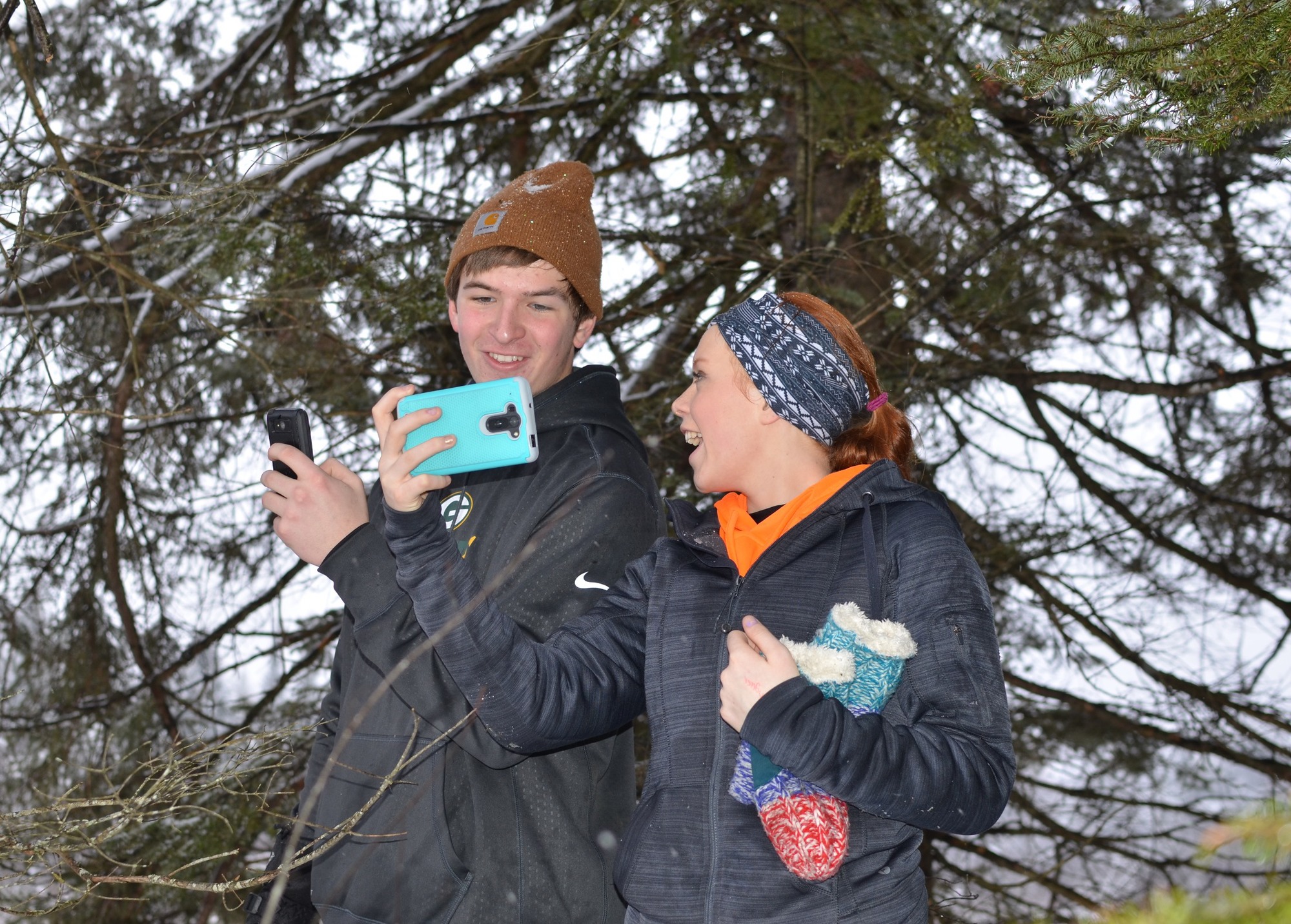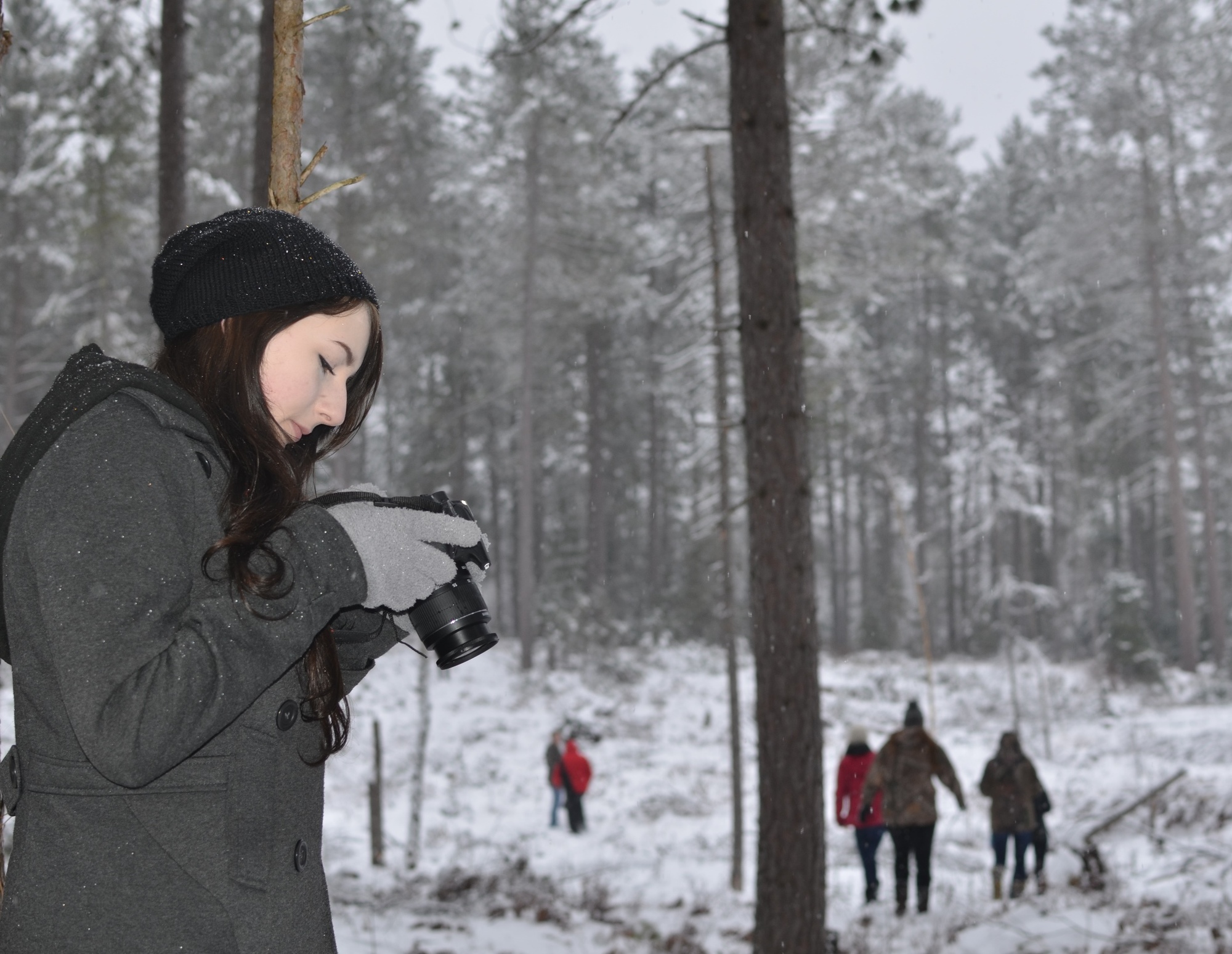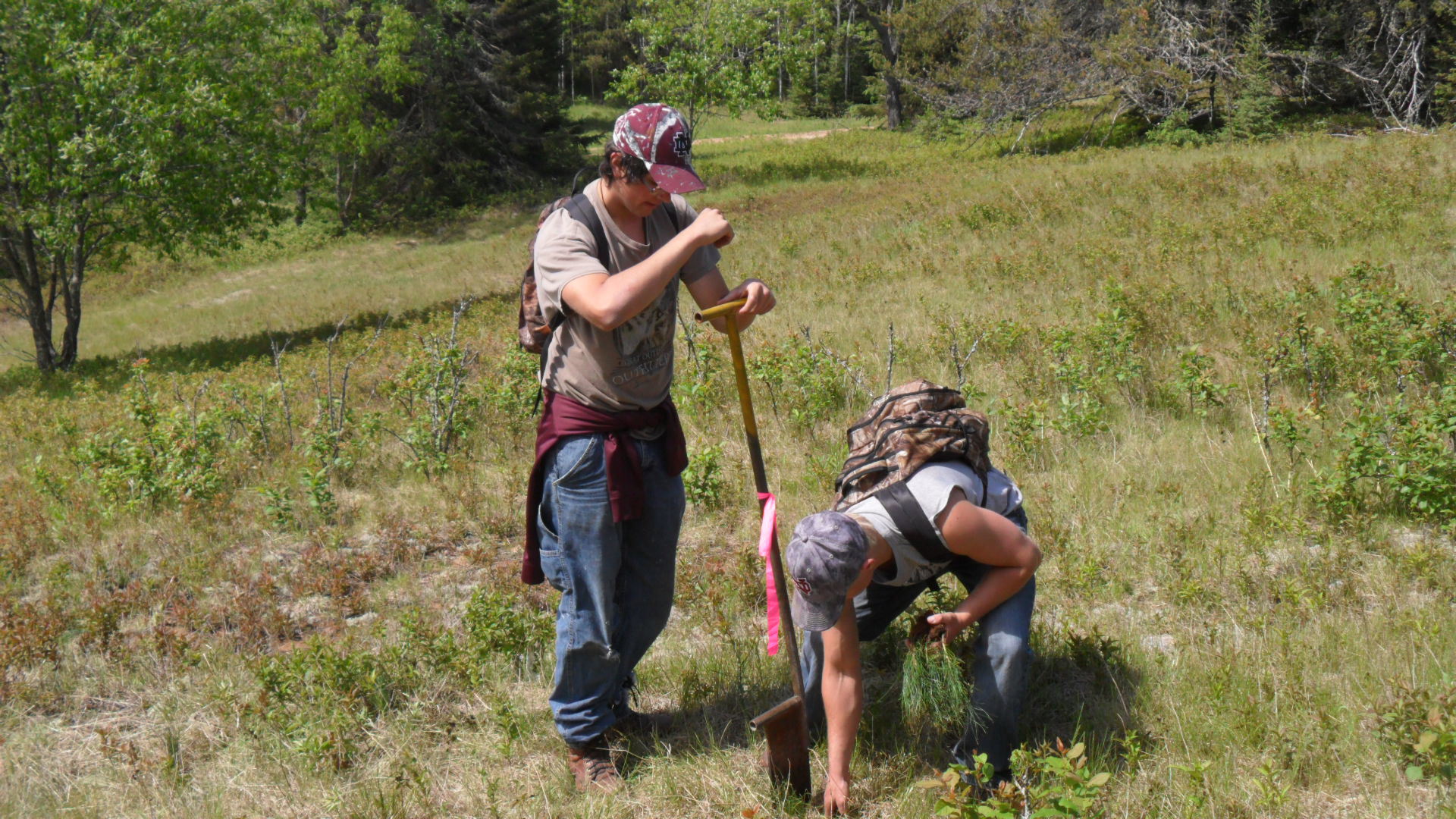School forests provide valuable legacy of learning
Forests can be a lot of things, depending on one’s perspective.
To a timberman, a forest is a place to go to work and make a living. To a deer hunter, a forest is a place to seek prey and meditate while sitting on the stand. To a hiker, it’s a place to recreate and escape the everyday world.
But to Mike Smalligan, a forest can be something entirely different. It can be a classroom.
Smalligan, who is the Forest Stewardship Program coordinator with the Michigan Department of Natural Resources, said forests are valuable learning tools that haven’t been used nearly to their potential. Resources, said forests are valuable learning tools that haven’t been used nearly to their potential.
“We see lots of education and outreach value in school forests,” said Smalligan, referring to the state’s school forest program that began back in the 1920s. “The use of these forest lands for educational purposes is underutilized.”
School forests were pioneered by Negaunee Schools in 1925 when the Upper Peninsula district established an official school forest for educational purposes.
The idea soon caught fire.
By 1929, the Cooperative Extension Service at Michigan State College held a conference “to encourage, promote and foster an educational program by the establishment of school and community forests.”
The conference, which was attended by higher educators, state and federal foresters, and even economic development authorities, really got the ball rolling.
In 1931, the Michigan Legislature passed the Municipal Forest Act (Community Forest Act) authorizing the Department of Conservation (DNR) to convey tax-reverted land to school districts and other units of government to establish community forests.
At first, many of the land transfers were of significant acreage. The largest block, some 25,000 acres, was conveyed to Gogebic County over a number of years.
 But gradually, Natural Resources Commission policy – that tax-reverted lands should be managed for forestry and recreation at the state level – restricted the conveyance of large tracts. But gradually, Natural Resources Commission policy – that tax-reverted lands should be managed for forestry and recreation at the state level – restricted the conveyance of large tracts.
The DNR cut the program blocks back to 40 acres, but over the years has deeded roughly 65,000 acres to various schools and units of government.
“There are probably 250 schools out there that own forest land,” Smalligan said.
Smalligan is on a mission to revitalize the school forest program, which may seem like an anachronism in today's urbanized, industrialized Michigan.
Nonetheless, while preparing for the 25th anniversary of the Forest Stewardship program, which was celebrated in 2015, Smalligan discovered there was only one Michigan county that didn’t have some sort of forest land enrolled in the program: Wayne County.
After casting around for a worthy project in that 83rd county, Smalligan found an ideal target: Frost Middle School in Livonia.
The 12-acre woodlot behind the school had been improved with railings along part of its nature trail – built, in part, by students in the school’s gifted program, under the watchful eye of science teacher Carim Calkins, who often uses the woods as a classroom.
However, there was no Forest Stewardship Plan in place. So Smalligan guided Calkins toward grant money available through the state’s Forest Stewardship Program. Now Frost Middle School is one of about 25 school forests with a management plan. available through the state’s Forest Stewardship Program. Now Frost Middle School is one of about 25 school forests with a management plan.
“That’s what we want to do,” Smalligan said. “We want to identify those schools (that have forests), approach them and offer them similar assistance.”
Smalligan’s dedication to school forests comes from his time as a private forester, before he joined the DNR.
He’d written plans for three school districts and liked what he saw.
“Working with a school involves working with an entire community,” Smalligan said. “I saw children enjoying themselves out in the forest and I saw community members that were passionate about the management of land that they considered theirs – a community asset.”
Smalligan points to the North Dickinson County Schools as an example of how school forests thrive.
The district has had a management plan for its forests since 1932 and still has a copy of the original plan – much of it handwritten, with a birch-bark cover.
Darrell Oman, director of support services for the school district, said the forests are used in programs for all age groups and many disciplines. Recently, for instance, high school English teacher Vicki Lindholm, took a sophomore class working on poetry out to take photos to help them understand imagery.
“I think it helps them get out of the classroom instead of looking up nice pictures on the Internet,” Lindholm said. “It gets us out. It looks at different perspectives of photography, not just the straight-on view, but maybe underneath, up-top, looking up-down, different angles. It’s been a lot of fun.”
The students took photos of trees, snow and ice crystals and other features in the natural environment of the school forest.
 “I think it just shows that your curriculum doesn’t have to be paper, pencil, in a classroom, sit down at a desk,” she said. “It helps you explore a little bit, not only explore with nature and the curriculum that way, but also with your friends and classmates and student-teacher relationship.” “I think it just shows that your curriculum doesn’t have to be paper, pencil, in a classroom, sit down at a desk,” she said. “It helps you explore a little bit, not only explore with nature and the curriculum that way, but also with your friends and classmates and student-teacher relationship.”
The North Dickinson County Schools use the forests in other ways. They gather pine cones, sprouting the seeds to plant seedlings, hold scavenger hunts to identify various elements from nature and write about them, learn to conduct forest inventories, use maps and even clean up trash. Next year, students will go out with the consulting forester – a professional forester who offers advice to landowners – to mark timber for harvest in the school forest.
Some school forests are located a fair distance from the schools, making it difficult for cash-strapped districts to arrange field trips.
Smalligan is working on a grant program – “Wheels to the Woods!” – to help schools defray the costs of taking students out to their school forests.
Beyond students, school forests are used by others.
School forest lands are open to the public and are used for recreation. In fact, the state’s Natural Resources and Environmental Protection Act of 1994 was amended during the 2011-2012 session to make sure that recreational usage is a part of the mission of school forests.
As it should be, Smalligan said.
“These are multiuse resources for any school,” he said. “They offer educational, economic, ecological and enjoyment rewards.”
 Watch a Showcasing the DNR video with interviews from North Dickinson County Schools English teacher Vicki Lindholm and her students. Watch a Showcasing the DNR video with interviews from North Dickinson County Schools English teacher Vicki Lindholm and her students.
For more information, visit the DNR’s webpage at www.michigan.gov/foreststewardship.
Sign up to subscribe to free weekly “Showcasing the DNR” stories.
/Note to editors: Contact: Mike Smalligan, 517-284-5884 or John Pepin, 906-226-1352. Accompanying photos are available below for download. Suggested captions follow. Credit: Michigan Department of Natural Resources. The video also is available for media use.
Camera: Andrea Gerstner, 16, of Sagola looks at an image she just shot during a school forest outing by the sophomore class from North Dickinson County Schools.
Four: Students from the sophomore English class at North Dickinson County Schools take pictures of nature and each other on a recent outing to the Spring Hill School Forest.
Frost: The Environmental Club at Frost Middle School in Livonia poses for a picture during a school forest outing in September 2015. The school is the first landowner in Wayne County to develop a Forest Stewardship Plan, outlining future actions for its 12-acre school forest. Photo courtesy of Ashley Harlock (8th-grade student).
Phones: North Dickinson County Schools sophomores Jared Miller, 16, of Sagola and Juliann Wickman, 15, of Felch show each other nature photos they took on their cellphones while on a January outing at the Spring Hill School Forest.
Planting: Two students from North Dickinson County Schools plant trees at the school forest property near Sagola in spring 2015. Students planted about 7,500 seedlings – roughly 1,500 white pine and 6,000 red pine.
Snow: Juliann Wickman,15, of Felch takes a close-up picture of snow on a balsam fir as part of her sophomore English class studies at North Dickinson County Schools.
Additional photos of those quoted in the story: Vicki Lindholm and Mike Smalligan./
The Michigan Department of Natural Resources is committed to the conservation, protection, management, use and enjoyment of the state’s natural and cultural resources for current and future generations. For more information, go to www.michigan.gov/dnr.
|

 Resources, said forests are valuable learning tools that haven’t been used nearly to their potential.
Resources, said forests are valuable learning tools that haven’t been used nearly to their potential. But gradually, Natural Resources Commission policy – that tax-reverted lands should be managed for forestry and recreation at the state level – restricted the conveyance of large tracts.
But gradually, Natural Resources Commission policy – that tax-reverted lands should be managed for forestry and recreation at the state level – restricted the conveyance of large tracts. available through the state’s
available through the state’s  “I think it just shows that your curriculum doesn’t have to be paper, pencil, in a classroom, sit down at a desk,” she said. “It helps you explore a little bit, not only explore with nature and the curriculum that way, but also with your friends and classmates and student-teacher relationship.”
“I think it just shows that your curriculum doesn’t have to be paper, pencil, in a classroom, sit down at a desk,” she said. “It helps you explore a little bit, not only explore with nature and the curriculum that way, but also with your friends and classmates and student-teacher relationship.” Watch a Showcasing the DNR video with interviews
Watch a Showcasing the DNR video with interviews




